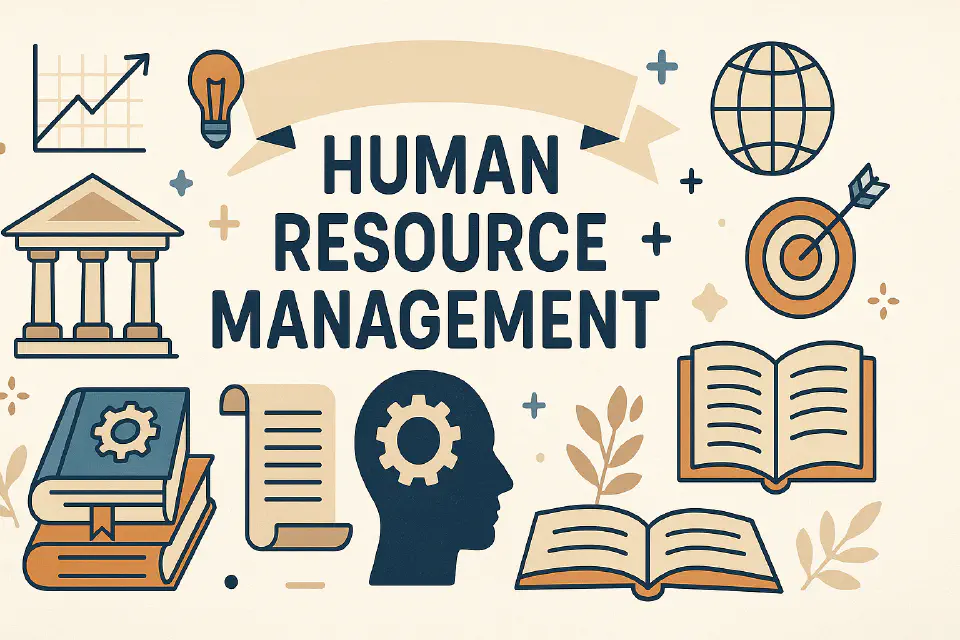
Foundations of Human Resource Management
HR didn't emerge overnight. It evolved from industrial practices, management theory, and social shifts. Understanding its roots helps us build smarter people strategies.
Human Resource Management (HRM) as we know it is the result of more than a century of evolution—an interplay between industrial needs, psychological insight, and shifting cultural values. To understand modern HR practices, it’s essential to explore where they came from, how they’ve been shaped by theory and social change, and why they’ve taken such divergent forms in different contexts.
From Labor Control to People Strategy
The roots of HRM lie in the early 20th century, when large-scale industrialization created the need to manage growing workforces. The first “personnel departments” emerged in response to labor unrest, workplace accidents, and absenteeism—not to develop talent or build culture.
Early personnel management focused on record-keeping, payroll, and compliance. The goal was order and efficiency, not engagement or innovation. This functional and reactive model became the norm in manufacturing-heavy economies.
The Influence of Classical Management Theories
At the same time, thinkers like Frederick Taylor and Henri Fayol were laying down principles of scientific management and administrative theory. Taylor’s time and motion studies inspired early HR practices around job design, performance measurement, and standardization.
Meanwhile, Fayol’s administrative principles introduced the concept of planning, organizing, commanding, coordinating, and controlling—elements that still appear in HR strategic planning today.
The Human Relations Movement
The 1930s brought a dramatic shift in how workers were viewed, thanks to the Hawthorne Studies by Elton Mayo. These experiments revealed that workers’ productivity increased not just through physical improvements to the workplace, but through social interaction, attention, and morale.
This discovery led to the Human Relations Movement, which emphasized motivation, job satisfaction, leadership style, and informal group dynamics. The shift laid the groundwork for the softer side of HRM.
The Rise of Behavioral Science
From the 1940s through the 1970s, psychology and sociology deeply influenced how organizations thought about employees. Theories like Maslow’s Hierarchy of Needs, McGregor’s Theory X and Theory Y, and Herzberg’s Two-Factor Theory began to explain not just what workers do—but why they do it.
These ideas introduced concepts like intrinsic motivation, leadership styles, employee empowerment, and organizational culture. HR was no longer just a clerical function—it was becoming a behavioral science-driven field.
The Transition to Strategic HRM
By the 1980s, business leaders and academics began to see HR not just as a support function, but as a strategic partner. Influential models like the Harvard Framework and the Michigan Model positioned HR as essential to organizational success.
This was a major turning point. HR was no longer reactive; it was proactive. The focus shifted to alignment with business strategy, talent development, and performance outcomes.
Globalization and the Expansion of HRM
As economies globalized, organizations faced more complexity—cross-border talent, varying labor laws, and diverse workforces. HR had to become more adaptive, strategic, and culturally aware.
Multinational companies developed international HR strategies, while local firms began to adopt global best practices. HRM frameworks now needed to consider context, flexibility, and diversity.
From Personnel to People: Language Matters
The terminology itself reflects this shift. The word “personnel” suggested files and compliance. Today, we speak of People & Culture, Employee Experience, and Human Capital. These aren’t just rebrands—they indicate a deeper change in philosophy.
Why This History Still Matters
Understanding the foundations of HRM isn’t just academic. It helps HR professionals recognize where their current practices come from—and where they might need to evolve. It explains tensions between transactional tasks and transformational goals. And it provides a lens for evaluating new trends without falling for every buzzword.
Conclusion
HRM has traveled a long road—from personnel clerks to strategic advisors, from rules and records to motivation and meaning. This journey is far from over. But to navigate it well, HR professionals need to understand the map: the theories, the turning points, and the paradigms that shaped where we are today.
The next step is to explore how different models frame HR’s role. One of the most enduring debates? Hard vs Soft HRM.